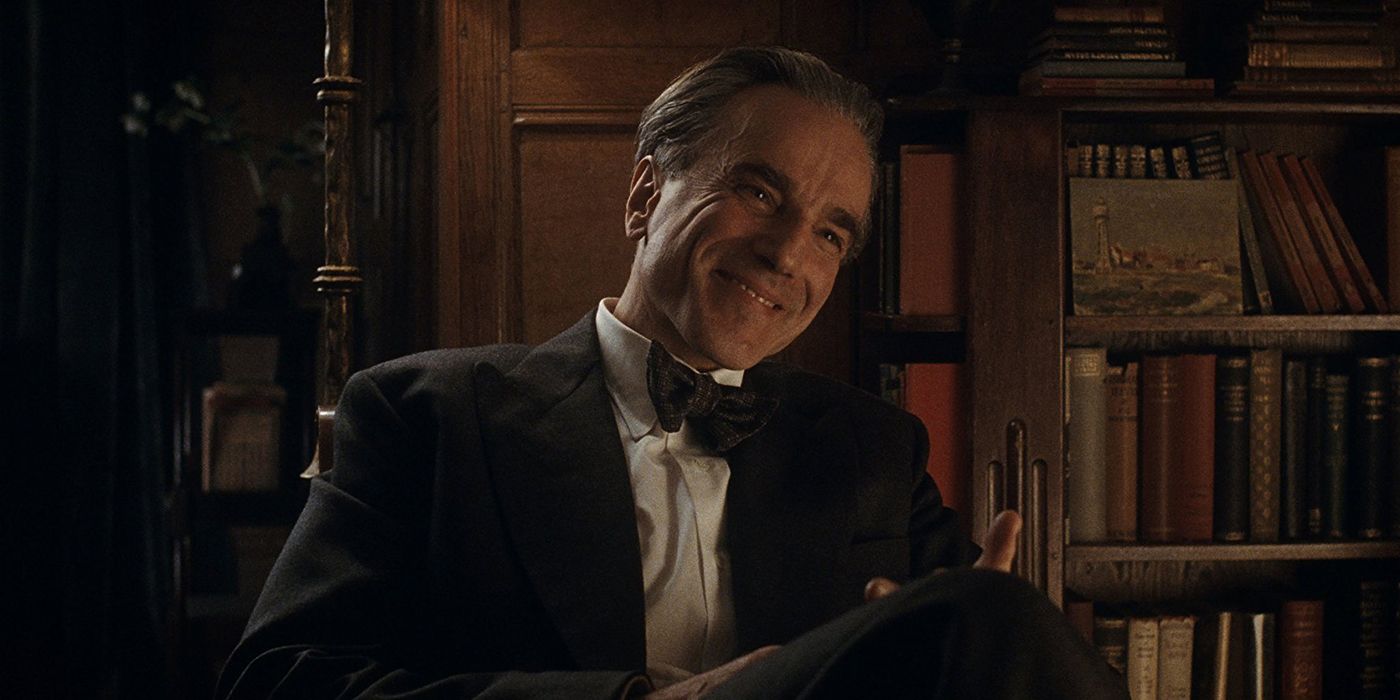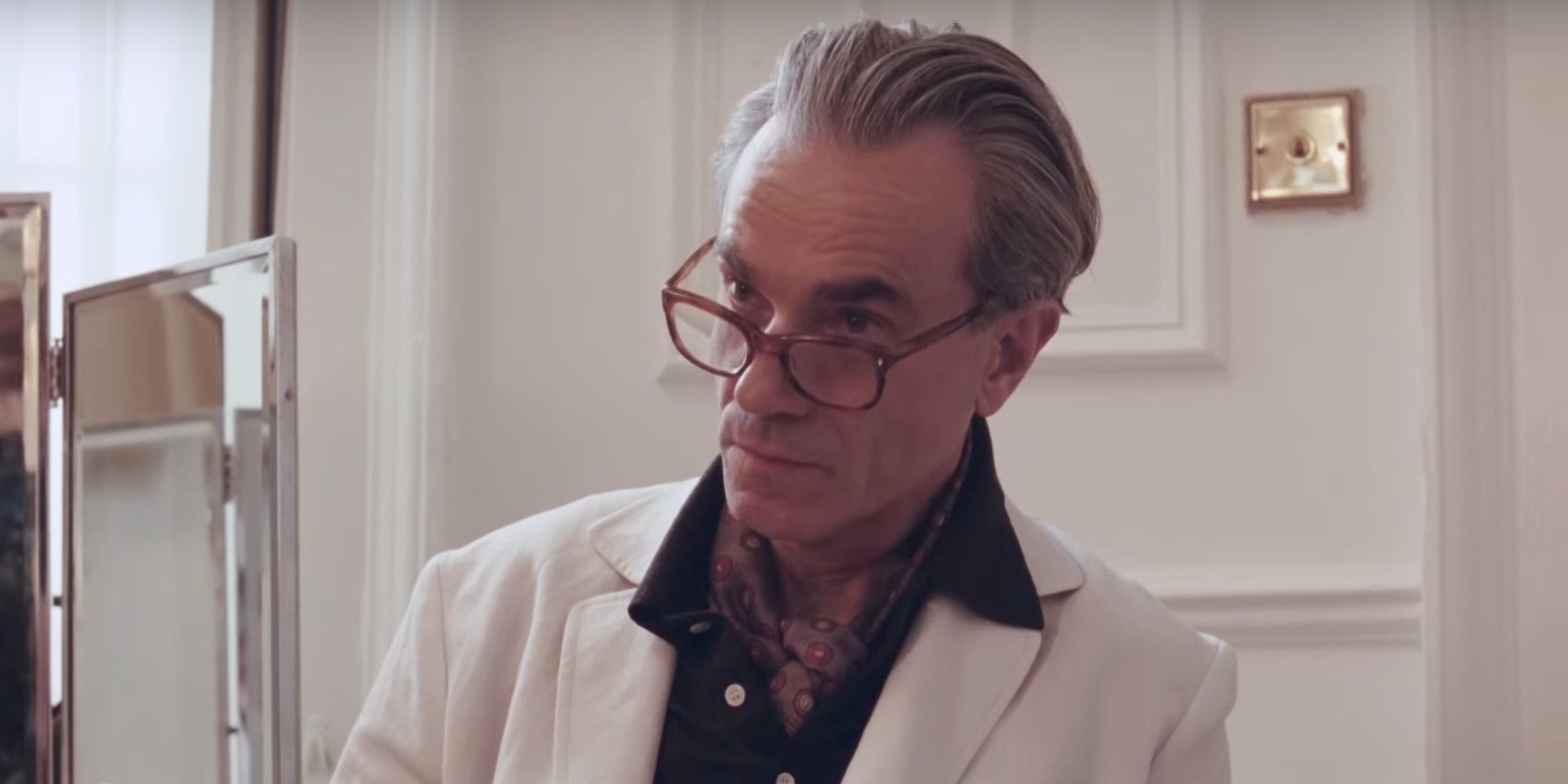Phantom Thread Ending Explained

Phantom Thread is a controversial love story that ends on a surprising note. With his eighth feature, Paul Thomas Anderson delivers another sophisticated period drama, again bringing life to nuanced characters who aren’t exactly good or bad but rather deeply flawed in a refined way. Set in the 1950s, the movie follows Reynolds Woodcock, an acclaimed dressmaker who finds in Alma the muse he always dreamed of. The two become romantically involved and complete each other professionally, but Reynolds’s stubbornness in the face of Alma’s caring, yet possessive love soon gives rise to a clash of obsessions.
Like every Paul Thomas Anderson movie, Phantom Thread was an event. The movie marked the retirement of a legend, Daniel Day-Lewis, who bid farewell to the big screen with a memorable performance alongside Vicky Krieps, and their onscreen chemistry as Reynolds and Alma remains one of the biggest cinematic highlights of the 2010s. Phantom Thread was nominated for six Academy Awards and received a 91% critic score on Rotten Tomatoes despite its controversial representation of a toxic relationship.
Why Does Alma Poison Reynolds?
Although Reynolds seems to be the focus of the story, Phantom Thread is seen almost entirely from Alma’s POV. She’s the thread that enables Reynolds to sew seams and hem his life and his work. Alma soothes Reynolds’s restlessness; she’s the pause and the breath of relief in his incessant mind, although he’ll never admit it. But Alma knows it, and understands him well, which makes her just as dangerous as she is helpful.
Alma breaks the stereotype of “the good wife” from the 1950s, which makes her Paul Thomas Anderson’s best female character; she cooks Reynolds careful meals, complies with his demands, and works for him — to a certain extent. She also knows how to make Reynolds jealous, goes out by herself, and tames her husband, or his love. An idea strikes her after Reynolds makes a fuss about the lovely dinner she prepared for him, claiming he won’t tolerate Alma disrupting his meticulously crafted routine. The argument prompts her to poison him with mushrooms and brutally force him out of his routine. He gets bed sick, delirious, and most importantly, amiable.
Reynolds gets out of his stupor consumed by a warm love for Alma and caring, which prompts him to finally ask her to marry him. The incident makes Alma realize that their relationship can only work through these intervals, in sickness, and in health, as they will say at the altar, but quite literally. An interesting behind-the-scenes fact about Phantom Thread is that the movie was inspired by Anderson’s wife, Maya Rudolph, caring for him. By poisoning Reynolds, Alma executes her part of their power play, enforcing her place in their house and reanimating Reynolds’ love by mothering him.
Did Reynolds Know He Was Being Poisoned?
There’s a threatening suspense in the final breakfast scene, which features Reynolds watching Alma prepare him a poisoned omelet. The score and sharp editing indicate that the film is getting near its climax, and anything could happen in case Reynolds finds out he is being poisoned. It comes as a huge surprise when he contentedly eats and digests the omelet, embracing his sickness and Alma’s intentions.
Paul Thomas Anderson’s revelations about Reynolds’s past and obsessions can be found in tiny details, more specifically in the hidden messages that Reynold sews into the linings of his dresses. It’s a blessing that Reynolds wasn’t among the roles Daniel Day-Lewis turned down, as it’s a perfect final part; Reynolds is a self-contained man obsessed with his routine to the point he forces everyone around him into his method. The truth is the death of his mother broke him entirely. Cyril and Alma are the only ones who can see through him.
His obsessive routine and dominant manners hide behind a mask, while all he really wants is to be taken care of. That’s why his feelings toward Alma endure, and he willingly accepts being poisoned; the sickness not only “brings back” his beloved mother but also forces him to take off his mask. The caring person he is after these episodes might not be who he truly is, but is the person he wants to be for the ones he loves, thus he embraces and craves his sickness.
Do Reynolds & Alma Have A Happy Ending?
“Kiss me, my girl, before I’m sick“, says Reynolds, delivering one of the best quotes of any Paul Thomas Anderson movie, signing an armistice in his tumultuous relationship with Alma. By the end of Phantom Thread, Reynolds and Alma seem to have finally understood each other, and they both see a clear path of harmony ahead. It’s revealed that Alma was speaking to Dr. Robert Hardy this whole time, and she can vividly see Reynolds and her dancing and embracing on the next New Year’s Eve, in contrast with the previous one’s fiasco.
While Reynolds and Alma presumably live happily as a couple resuming their wicked cycle over and over again, there’s no denying that their relationship is toxic. What makes it so controversial and complex is how, in the end, Reynolds and Alma might seem like a dysfunctional movie couple, but their love is just as toxic as it is honest and surprisingly flawless. Everyone loves in their own way and such sentiment can be a selfish process: Reynolds and Alma are looking for themselves in each other. By finally acknowledging this, they seem to be free of judgment, with Cyril watching closely as a mediator.
The Meaning Of Phantom Thread’s Title
Phantom Thread isn’t a title easy to dissect by taking its literal meaning, but it makes total sense when compared to a popular term used by seamstresses working in the East End of Victorian London. “Phantom thread” is used to describe the feeling of going home after exhaustive hours of sewing and seaming, and finding themselves involuntarily sewing invisible, or better, phantom threads in the air.
The term makes perfect sense when compared to Reynolds’s restlessness, almost as if he was the embodiment of a “phantom thread.” One of the best Paul Thomas Anderson movies, Phantom Thread offers plenty of hidden details and its title just adds up to the experience. The hidden messages that Reynolds sews into his dresses seem to be his way to deal with his endless, involuntarily sewing, until Alma shows up and takes him out of his misery.
The True Meaning Of Phantom Thread’s Ending
Phantom Thread doesn’t hide its connections with the renowned Oedipus complex theory, established by Sigmund Freud, as well as other insightful references to psychoanalysis. The movie is a perfect example of how much people project themselves on the ones they love, and how there’s no right way to love. Reynolds and Alma’s relationship is far from being a good example, but they acknowledge the sacrifices their love requires. They embrace their painful cycle and, in exchange, find harmony and texture, and work as models for each other, both in life and at work.
Share this news on your Fb,Twitter and Whatsapp
NY Press News:Latest News Headlines
NY Press News||Health||New York||USA News||Technology||World NewsTimes News Network:Latest News Headlines
Times News Network||Health||New York||USA News||Technology||World News




